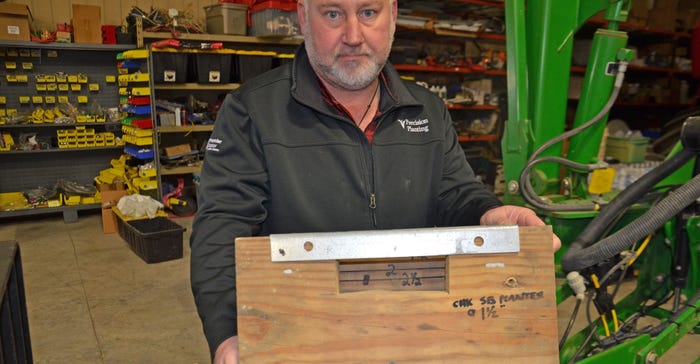
You remember a gut feeling when corn emerged last spring. Some rows seemed to emerge faster and more uniformly than others. You couldn’t quite put a finger on it, and you still aren’t sure. You went through the planter already, and everything seems ready to go for this year.
“Check each row to see what depth it is actually placing seed at,” recommends Steve Gauck, Greensburg, Ind., a regional manager for Beck’s and a farmer himself. “It’s quite possible that even though you have all rows set at the same depth, they may actually be placing seeds at slightly different depths.
“That can affect both uniformity of emergence and final stand, depending upon planting conditions. One of the biggest variables is moisture in the seed trench. If some seeds go into moist dirt and some are left in dry dirt, you’re setting the stage to see differences in stand establishment.”
Just how common is this condition? “It happens more often than you might think,” says Todd Mauer, Greensburg, Ind., a farmer and sales manager for Blackhawk Precision Ag, a dealer for Precision Planting. “We check a lot of planters for customers, and we even check new planters. Sometimes even row units on brand-new planters won’t all be planting at the same depth, even though they’re set at the same depth.”
Checking and adjusting
How can you tell if some rows are planting at different depths? “You can do it in the shop or barn lot before you go to the field,” Mauer says. “We made a handy wooden block, which slips under a row unit. The disc opener slips into a slot we left between the two pieces of wood forming the block.
“Then, we lower the planter unit until it rests on the block. We have the inside of the block marked so that when the disc opener slips in, we know how far it is below the planter unit. That represents the planting depth for that unit on that setting.”
Mauer often uses a forklift to lift the rear of the row unit so he can slide the block under it. You could also accomplish the same thing by lowering the planter to the ground position once the block is in place.
If some rows aren’t at the right depth at the prescribed setting, he adjusts the setting handle until the depth is correct. Then he marks the settings on each row so he remembers where the handle should be set.
If you want to check your own planter, construct a block out of a piece of 2-by-2 or 4-by-4, he suggests. “Our block is narrow because our row units are equipped with the Conceal fertilizer system from Precision Planting, and the Conceal knife must clear the block. For a regular setup with gauge wheels, the block could be wider, with the gauge wheel resting on the block when the planter is in the down position.”
Mauer suggests rechecking planting depth on each row whenever you replace disc openers. With more no-tilling and high-speed planting, disc openers may be replaced more often than in the past.
About the Author(s)
You May Also Like




